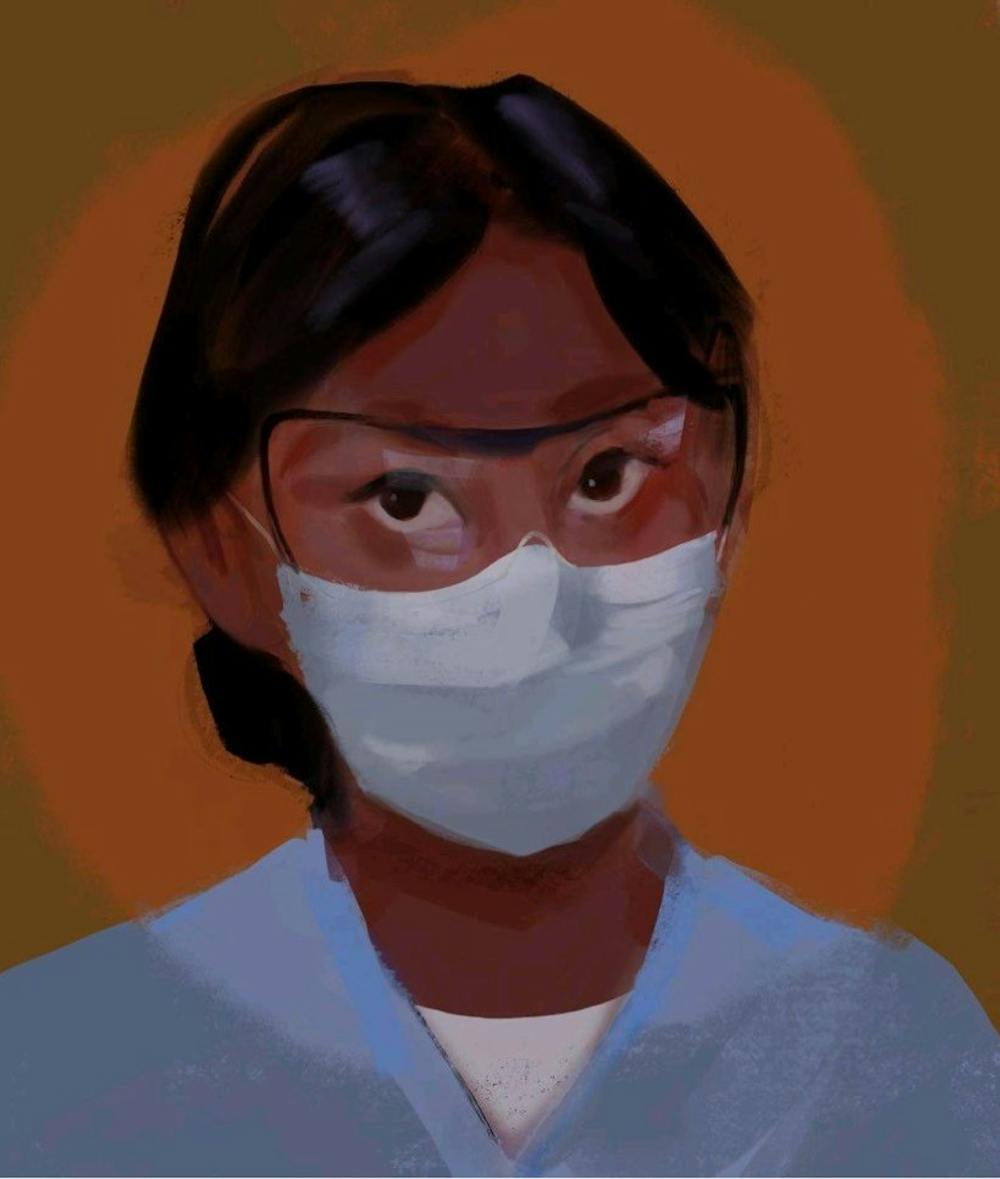The COVID-19 health crisis has wrought far-reaching changes in healthcare, and the School of Nursing is no exception. Not only have nurses had to learn quickly how to treat a new and dangerous virus, but the School of Nursing has also had to alter the methods in which care is conducted. These changes were publicized in an annual report, exemplifying the School’s concerted commitment to training future nurses for the frontlines of healthcare – even in a pandemic.
A large part of the Nursing curriculum consists of clinicals – real-world experience in a hospital unit. Nursing students begin with five-hour rotations in the hospital in their second year, continue with more intensive clinicals their third year and work essentially as full-time nurses during their fourth year.
In 2021, the school transitioned to placing an emphasis on teaching nursing students to care for patients with COVID-19. According to Dr. Pam Cipriano, Dean of the School of Nursing and the Sadie Heath Cabaniss Professor of Nursing, the department was initially hesitant due to the unknown nature of the virus and concerns about personal protective equipment shortages. The pandemic has added goggles and masks to standard PPE – just one small example of the new normal in which Nursing students and faculty are learning to work.
Third-year Nursing student Flannery Enneking-Norton viewed the transition to learning and working in the hospital during a pandemic as challenging yet smooth.
“It's really just a matter of trusting the PPE and trusting the science,” Enneking-Norton said. “But I feel very fortunate that we've been able to maintain a lot of our in-person components because those are obviously essential for doing real-world nursing.”
COVID-19 has also affected the School of Nursing’s involvement in the treatment of other illnesses, as explained by Assoc. Nursing Prof. Virginia LeBaron.
“From a funding perspective, a lot of agencies and organizations are now prioritizing funding for COVID-related research,” LeBaron said.
This shift does, however, change the landscape of the funding available for other important nursing research. Cipriano clarified that most nursing research “has not incorporated the most recent effects of COVID” because research proposals take many months to review.
Overall, throughout 2021, the number of nursing research proposals increased by 39 percent, , while funding for research increased by 36 percent.
In February 2021, LeBaron received a $3.4 million grant for her non-COVID-19-related research — investigating how technology can be leveraged to improve cancer pain management — from the National Institute for Nursing Research..
The pandemic brought major changes in the process of nursing research. LeBaron’s research, for example, involves implementing a system of smart health technology to help monitor and manage pain from the homes of cancer patients and their caregivers. Before March 2020, a team would have traveled to participants’ homes to set up the system and teach how to use it face-to-face.
“COVID made that impossible,” LeBaron said. “We completely pivoted and re-envisioned our whole system.”
The technology is now shipped to participants, where they set it up themselves with remote support.
Restrictions due to COVID-19 limited the number of family members who could come into the clinic, making it much more difficult to talk to patients and their caregivers about participating in the study. Recruitment was also challenged simply by the additional stress of living in a pandemic.
“When you're conducting research with patients that have cancer, it's already a sensitive, difficult time for people,” LeBaron said. “When you add on the layer of a pandemic, it just adds a whole other layer of stress and anxiety to an already difficult situation. And so, understandably, I think people's bandwidth for participating in research might be more limited.”
Concerns about face-to-face interaction during COVID-19 not only impacted the way nurses administer care but also how nursing students were taught. In 2021, 15 percent more nursing students’ clinical hours came from simulations. Some are on the computer, while others take place in a simulation lab involving very lifelike mannequins. Simulations include scenarios like emergency situations, making decisions from vital signs and difficult patient encounters.
Enneking-Norton said that her favorite has been a childbirth simulation.
“It made me appreciate how much trust and competence we had within our group so that we can all perform our different roles and work together to deliver this big healthy baby,” Enneking-Norton said.
Enneking-Norton described simulations as a way to build muscle-memory for critical situations before encountering them in real life.
The School of Nursing feels strongly about emphasizing in-person clinical hours to prepare students for the real-world environment of nursing, but these high-quality simulations are “a really important adjunct to learning,” Cipriano said.
This is especially true in the midst of the pandemic, when physical interactions in the hospital must be minimized for safety.
On an optimistic note, LeBaron observed that remote situations forced by COVID-19 have shown that a lot of nursing care can be delivered remotely while still being effective.
“I think we're going to see a trend towards more remote monitoring [and] more healthcare that comes to people where they are in their home,” LeBaron said. “I think that trend was already starting, but that has really accelerated with COVID because we had to do it very, very quickly. I think it broke down a lot of barriers in a pretty profound way.”
Looking towards the future, the School of Nursing remains flexible and attentive to the public health situation.
“Our goal for 2022 is to … adjust as smoothly as possible to whatever the pandemic might throw our way,” LeBaron said.







